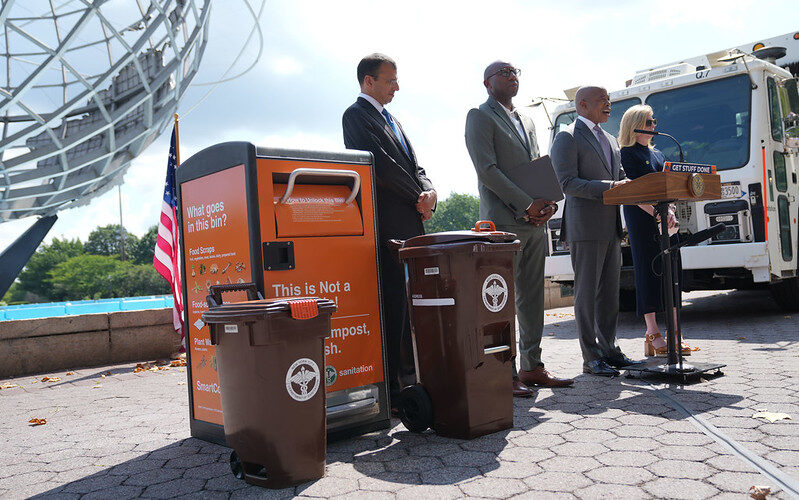As we predicted, New York City’s new household organic waste collection mandate (also called composting) is working — and not because officials are hammering people with fines, but because officials made the program as simple, consistent and accessible as they could.
This is a city where people, including people on this Editorial Board, take pains to point out every little thing that government does wrong, this one was done right, as first championed by former Sanitation Commissioner Kathryn Garcia under Bill de Blasio and expanded citywide by her successor, Jessie Tisch, under Eric Adams.
In just the fourth week of the new program’s citywide rollout, New Yorkers have diverted a record-breaking 5.24 million pounds of food scraps, food-soiled paper and yard waste from landfills — more than five times the amount collected during the same period last year.
And it bears special notice that this happened not because the heavy hand of government told people they had to get with the program or else, but because City Hall and the Sanitation Department, listening to complaints, made the new regime maximally easy to comply with and limited fines to repeat offenders.
When new citywide rules kicked in this April Fool’s Day, compliance was spotty to say the least. The city issued nearly 2,000 citations in the first week of enforcement, generating significant blowback.
So, less than three weeks into the program, City Hall and Sanitation pivoted. They dialed back fines and focused on education and outreach instead. The pickup days are easy to figure out. There are no finicky rules about what the bins must look like. The city is also giving away finished compost at new distribution sites, providing up to 40 pounds of garden-grade compost to residents for free.
Under the refined regulations, only buildings with more than 30 units that have gotten multiple warnings are getting punished, and those fines are capped at $100.
Whatdya know, compliance has only increased since, teaching that sometimes you catch more flies with composted honey, not composted vinegar.
To be fair, there’s a long way to go. Even at the current record levels, participation rates here are low compared to places like San Francisco and Seattle. If the program is going to be genuinely universal and mandatory, there will come a time when the rules will have to become more than just suggestions. Current plans are to bring back fines on small apartment buildings and homeowners by the end of this year.
There’s a lot that still doesn’t make sense when it comes to moving waste out of New York City. Residential diversion rates, which is to say the share of waste that is recycled rather than heading to landfill, was about 20% in the latest fiscal year — reflecting just a modest improvement over the past decade. In some categories of waste, “capture rates” — meaning the proportion of recyclable material that is sorted correctly for recycling — remain low, about 50%.
Indeed, even of metal, glass and plastic that’s correctly sorted, as much as 15% winds up in landfills, generally because it’s plastic that lacks viable markets or is contaminated.
All told, adding up residential, commercial and institutional waste, New York City sends more than 6 million tons of waste to landfills every year.
Recycling represents progress. Composting represents progress. Build on it, one pickup at a time.








